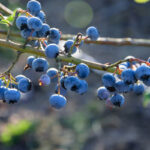Peruvian blueberry exports continued to soar in 2022

In just over ten years, Peru has gone from shipping small quantities of blueberries to becoming the world's leading exporter, with an average annual growth rate of 53%, according to Agraria.pe.
2022 was no exception, with a reported increased production of 280,000 metric tons (MT) in April - May, and a projected 22% increase year-on-year as per USDA figures.
According to data presented by the Central Reserve Bank of Peru (BCRP), the increase is mostly due to the addition of new varieties with better yields, as well as the renewal of older crops.
Peru's agro-export sector has become one of the main drivers of the country's economic growth, with blueberries representing 15% of agricultural exports as of 2021.
BCRP’s December data shows that export volumes during the final months of the year reached 210MT, surpassing 2021 figures by 36% two months earlier.
Blueberry shipments reported through October 2022 were valued at US$1.1 billion, increasing by 20% year-on-year.
The U.S. (52%) and the Netherlands (22%) continue to be the top destination markets for Peruvian blueberries, with the Port of Rotterdam as the main gateway for Peruvian fruit to the old continent.
Regarding prices, the BCRP reports an almost 12% drop in the average price for this commodity. Although this news alerts trade associations, it does not worry all producers.
According to the banking institution, the drop in price is due to the oversupply currently experienced by the world market.
Peru's main producing regions, La Libertad and Lambayeque, have increased export volumes by 40% and 45%, respectively.
Additionally, blueberry operations have been successfully established in the central Andes Mountains at 7,382 feet above sea level. Cooler temperatures in the area and greenhouse systems that positively impact the sugar content of the fruit have been key, the USDA said in a recent report.
Production in Peru continues expanding rapidly, growing from 80 hectares in 2012 to about 17,500 hectares currently in production. This represents a roughly 70% annual growth, according to the USDA.
This growth, which led to the oversupply, is explained by the decision of some companies to renew their blueberry varieties for more modern ones, which have a lower production cost and higher yield.
Although the drop in prices may affect the profitability of producers with lower yielding varieties, those who have made the aforementioned change have compensated by reducing production costs and selling larger volumes to foreign retailers.













































